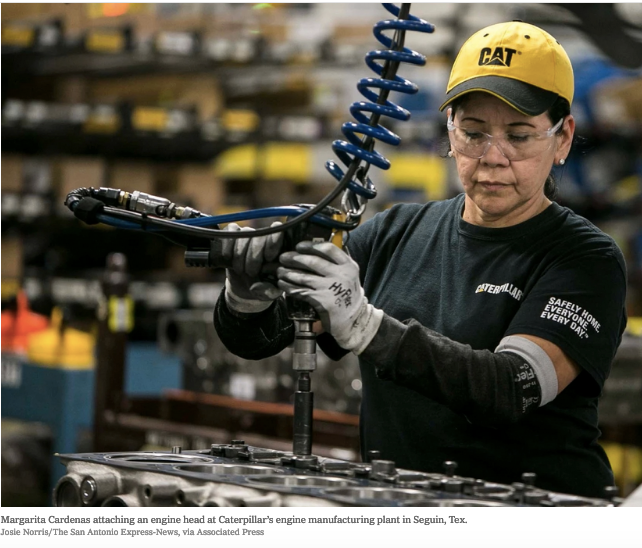When Donald Trump promised to Make America Great Again, his slogan meant different things to different people.
For many supporters it meant restoring the political and social dominance of white people, white men in particular.
For others, however, it meant restoring the kind of economy we had a generation or two ago, which offered lots of manly jobs for manly men: farmers, coal miners, manufacturing workers. So it may matter a lot, politically, that Trump has utterly failed to deliver on that front — and that workers are noticing.
Now, many of Trump’s economic promises were obvious nonsense. The hollowing out of coal country reflected new technologies, like mountaintop removal, which require few workers, plus competition from other energy sources, especially natural gas but increasingly wind and solar power. Coal jobs aren’t coming back, no matter how dirty Trump lets the air get.
And farmers, who export a large fraction of what they grow, should have realized that Trump’s protectionism and the inevitable retaliation from other countries would have a devastating effect on their incomes. Somewhat ironically, Trumponomics has effectively turned rural Americans, who are far more conservative than the nation at large, into wards of the state: This year almost 40 percent of farm income will come from trade assistance, disaster assistance, the farm bill and insurance indemnities.
However, Trump’s promise to bring back manufacturing wasn’t, on the face of it, completely absurd. America runs a large trade deficit in manufactured goods; surging imports did play a significant role in displacing industrial jobs after 2000. So it wasn’t crazy to imagine that protectionism would bring some of those jobs back, even if it made America as a whole poorer.
USDA currently projects farm income in 2019 to reach $88 billion – the highest net farm income since 2014’s $92 billion, but still 29% below 2013’s record high. In addition, nearly 40% of that income – some $33 billion in total — is related to trade assistance, disaster assistance, the farm bill and insurance indemnities and has yet to be fully received by farmers and ranchers (Is Farm Income Really Up?).




